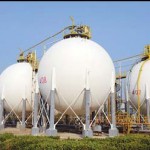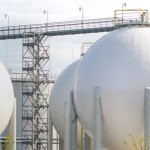 Natural gas fell for a second day on Tuesday as cooler weather systems across portions of the US are expected to curb cooling demand this week and the next, while Thursdays inventory report by the EIA will likely show a build exceeding the one from last week.
Natural gas fell for a second day on Tuesday as cooler weather systems across portions of the US are expected to curb cooling demand this week and the next, while Thursdays inventory report by the EIA will likely show a build exceeding the one from last week.
Natural gas for delivery in September traded 0.07% lower at $2.726 per million British thermal units at 08:08 GMT, shifting in a daily range of $2.733-$2.722. The contract slid 2.6% on Monday to $2.728 after it rose 0.1% last week.
Hot weather with highs in the upper 80s to 100s continues to engulf much of the eastern, western and far southern US, NatGasWeather.com said. However, a strong cool weather system with showers and thunderstorms will strengthen over the north-central US the next few days and will also spill cooler-than-usual temperatures over northern Texas and the South, easing national cooling demand to moderate through Thursday.
Adding to bearish pressure, a stalled system will keep Texas slightly cooler, but the eastern US remains very warm. After the central US weather system is pushed back to Canada, high pressure will regain ground over the South and East on Friday through the weekend, resulting in very warm to hot temperatures that will beef up national natural gas demand to high compared to normal.
However, another weather system will track across the northern Plains and Midwest on Sunday going into next week. This will once again bring below-usual temperatures and curb cooling demand, and it will be of main interest to see how deep this system pushes into the northern US. As the week progresses, high pressure will regain ground over the southern, eastern and central US, spreading very warm to hot temperatures and boosting cooling demand through the rest of August. The West, however, is expected to be cooler than usual as Pacific weather systems track inland.
Readings
According to AccuWeather.com, New York will be very toasty on August 19th as temperatures peak at 91 degrees Fahrenheit, 9 above usual, before highs drop to the low-mid 80s for the rest of the month. Chicago will fail to exceed the seasonal 82 degrees today and active weather will cause highs to range between the mid 70s and mid 80s through the end of August.
Down South, readings in Houston will max out in the low-mid 90s this week and the next, and occasionally the upper 80s, which will still be very warm but well below last week’s 100s. On the West Coast, Los Angeles will be slightly cooler than usual through August 22nd as highs reach 81-83 degrees, compared to the average 84-85, followed by a jump to the mid-upper 80s for the remainder of the month.
Inventories
This week’s inventory report by the Energy Information Administration is expected to show another above-average build as continued comfortable conditions across the northern US during the tracked period managed to negate the effect of very strong cooling demand over the southern half of the country. The government agency is expected to report a stockpiles gain of about 70 billion cubic feet for the week ended August 14th, compared to the five-year average of 54 bcf, while supplies rose by 86 bcf a year earlier.
Next week’s report, however, will likely bring a smaller-than-usual inventory build as very warm to hot temperatures across the US the past weekend and early this week offset the cooler system that is expected to spin up across the north-central US mid-week. Supplies are projected to rise by little over 50 bcf during the week ended August 21st, below the five-year average increase of 61 bcf and the year-ago one of 77 bcf.
Last Thursday’s data showed an above-normal injection of 65 billion cubic feet for the seven days ended August 7th which brought the total gas held in US storage hubs to 2.977 trillion cubic feet, expanding a surplus over the five-year average of 2.896 trillion to 2.8% from 2.2% a week earlier.
Pivot points
According to Binary Tribune’s daily analysis, September natural gas futures’ central pivot point stands at $2.745. In case the contract penetrates the first resistance level at $2.771 per million British thermal units, it will encounter next resistance at $2.815. If breached, upside movement may attempt to advance to $2.841 per mBtu.
If the energy source drops below its S1 level at $2.701 per mBtu, it will next see support at $2.675. In case the second key support zone is breached, the power-station fuel’s downward movement may extend to $2.631 per mBtu.
In weekly terms, the central pivot point is at $2.839. The three key resistance levels are as follows: R1 – $2.896, R2 – $2.992, R3 – $3.049. The three key support levels are: S1 – $2.743, S2 – $2.686, S3 – $2.590.





